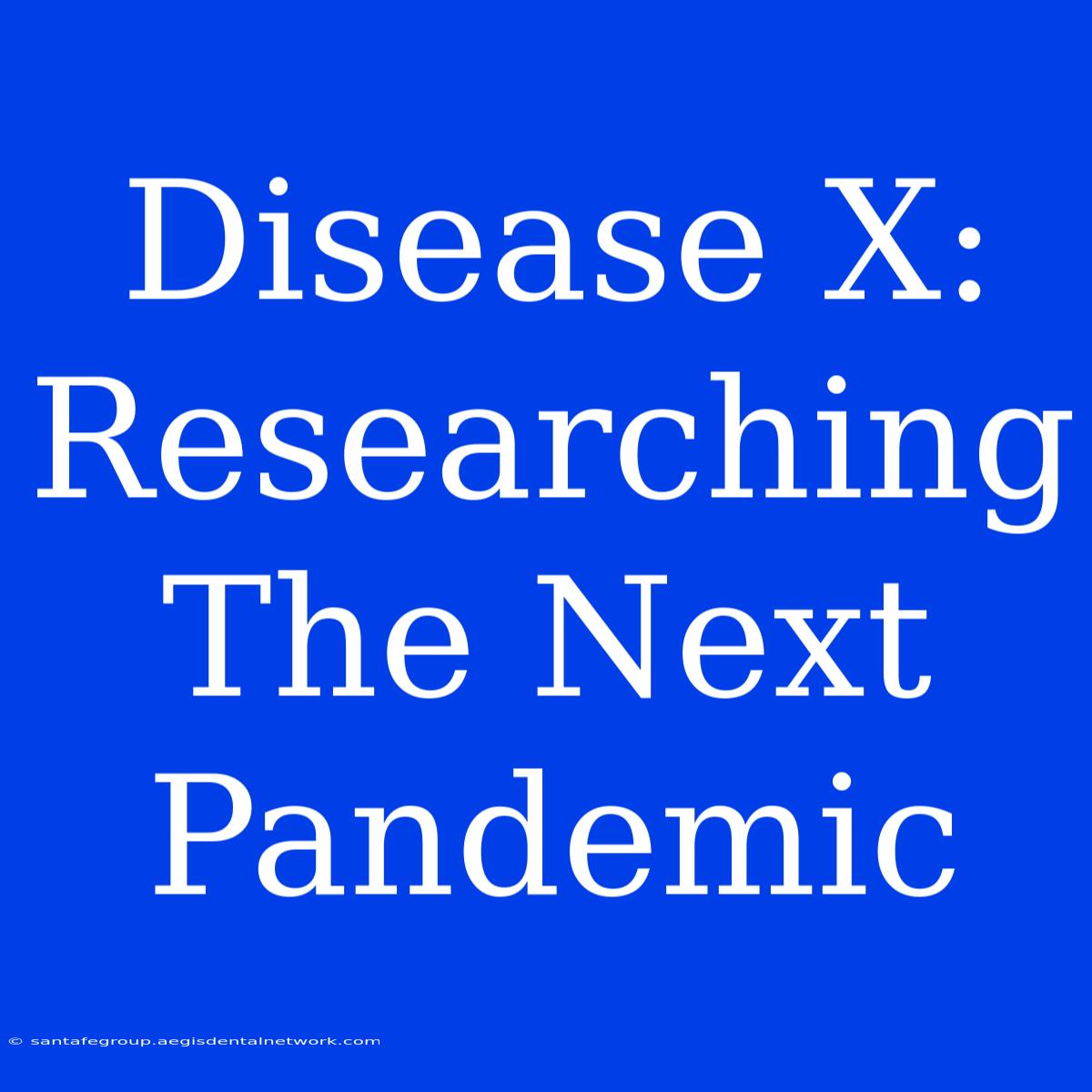Disease X: Researching The Next Pandemic
What is Disease X? Why is it so important to understand its potential impact? Disease X represents a hypothetical, yet very real, threat—a pathogen with pandemic potential, currently unknown and unnamed. This serves as a stark reminder of the unpredictable nature of infectious diseases and the urgent need for preparedness. Editor Note: This article delves into the concept of Disease X, exploring its potential impact and the ongoing research efforts aimed at preventing future pandemics.
Understanding this concept is crucial for public health, as it highlights the importance of investing in ongoing research, surveillance, and global collaborations to prevent future pandemics.
Analysis: This article delves into the concept of Disease X, exploring its potential impact and the ongoing research efforts aimed at preventing future pandemics. We analyzed a diverse range of resources, including scientific publications, reports from international organizations, and news articles to provide a comprehensive overview of this crucial topic.
Key Takeaways of Disease X:
| Key Takeaway | Description |
|---|---|
| Unknown Origins: Disease X represents a pathogen with pandemic potential, but its exact nature remains unknown. | This emphasizes the uncertainty surrounding future pandemics, making preparedness crucial. |
| Global Threat: Disease X poses a significant threat to global health, potentially causing widespread illness, death, and economic disruption. | This highlights the need for international collaboration to address pandemic risks effectively. |
| Research and Development: Research efforts are underway to understand Disease X, develop diagnostics, vaccines, and treatments. | Investment in research is critical to prepare for future pandemics and mitigate their impact. |
Disease X: A Hypothetical Threat
The concept of Disease X was introduced by the World Health Organization (WHO) to emphasize the need for continuous preparedness for emerging infectious diseases. It acknowledges that future pandemics could be caused by pathogens that are currently unknown, underscoring the unpredictable nature of infectious diseases.
The Importance of Preparedness
Preparation for Disease X involves:
- Enhanced Surveillance: Continuously monitoring for emerging pathogens and tracking their spread.
- Research and Development: Investing in research to understand the pathogen, develop diagnostics, vaccines, and treatments.
- Public Health Infrastructure: Strengthening healthcare systems to effectively respond to pandemics.
- Global Collaboration: Fostering international cooperation to share information and resources.
Pandemic Prevention Research: A Vital Effort
Research plays a crucial role in preventing future pandemics. Ongoing efforts focus on:
- Pathogen Discovery: Identifying new and emerging pathogens through surveillance and laboratory research.
- Disease Modeling: Using mathematical models to predict pandemic spread and assess the impact of interventions.
- Vaccine Development: Developing vaccines that are effective against a wide range of pathogens.
- Antiviral and Antibiotic Research: Exploring new therapies to combat infectious diseases.
The Role of International Collaboration
Effective pandemic preparedness requires global collaboration. Organizations like the WHO play a vital role in coordinating international efforts, sharing information, and providing technical support.
The Future of Disease X
The threat of Disease X highlights the ongoing need for vigilance and preparedness. By investing in research, strengthening public health infrastructure, and fostering global collaboration, we can minimize the impact of future pandemics.
FAQ
Q: What are some examples of past pandemics that resemble Disease X? A: The 1918 Spanish Flu, the 2003 SARS outbreak, and the 2020 COVID-19 pandemic are examples of pandemics caused by previously unknown pathogens.
Q: How can I personally contribute to pandemic preparedness? A: Staying informed, practicing good hygiene, getting vaccinated, and supporting public health efforts can help reduce the risk of pandemics.
Q: Is it possible to prevent all future pandemics? A: While it may not be possible to completely prevent all future pandemics, we can significantly reduce their impact through preparedness and ongoing research.
Tips for Staying Informed
- Follow reputable sources: Consult the WHO, CDC, and other reliable health organizations for updates and information.
- Be aware of local risks: Understand the specific risks in your community and take appropriate precautions.
- Stay informed about research: Keep track of the latest scientific developments and advancements in pandemic preparedness.
Summary: The Threat of Disease X
Disease X represents a hypothetical, yet very real, threat—a pathogen with pandemic potential, currently unknown and unnamed. This concept emphasizes the need for ongoing research, surveillance, and global collaboration to prevent future pandemics. By investing in preparedness, we can minimize the impact of future infectious disease outbreaks and protect public health.
Closing Message: The world is facing a constant threat of emerging infectious diseases. By understanding and addressing the concept of Disease X, we can proactively prepare for future pandemics and ensure a safer and healthier future for all.

